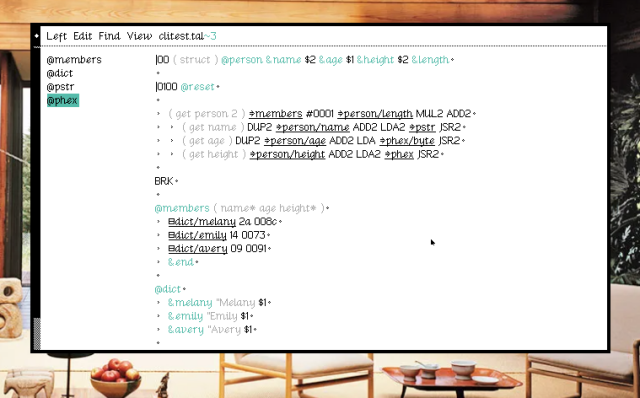Search
Items tagged with: uxntal
Implemented #Lisp in #Uxntal today, it makes for a 2kb embeddable virtual machine that I can embed in our next game project. I've implemented a bunch of Lisp systems over the years(Ronin, SECDs, etc..) but it's the first time doing it in a catlang. It's impressive how well it maps to a stack machine, it's clearly a better fit than binding environment to a register, things just want to be linear, there's no need whatsoever for variables.
git.sr.ht/~rabbits/heol
git.sr.ht/~rabbits/heol
A question that keeps coming back is how to apply a struct to a database in #uxntal.
Here's the little example I will be using in the upcoming docs 😀


